
Have you ever noticed that sometimes people say “I could care less” when they really mean that they could not possibly care less about something? I mention this because… Some of you may care less about how a Nordic Tug is built. Tough. Others have expressed interest and I’m

Have you ever noticed that sometimes people say “I could care less” when they really mean that they could not possibly care less about something? I mention this because…
Some of you may care less about how a Nordic Tug is built. Tough. Others have expressed interest and I’m going to make posts so that they have a sense of all the steps involved. Personally, I find it pretty interesting.
Dave, the Production Manager at Nordic Tugs, sent me a few photos today of the last steps taken before our boat moves from the building where the hull and top piece are made to the building where everything else happens. .
First, a thick coat of grey epoxy paint is applied to the hull below the water line. This is an optional step that we chose. It makes the bottom more durable, that is waterproof, in the long term. The epoxy layer is strongly recommended for boats that will live in warm water — think Florida and the Bahamas — but certainly can’t hurt elsewhere.
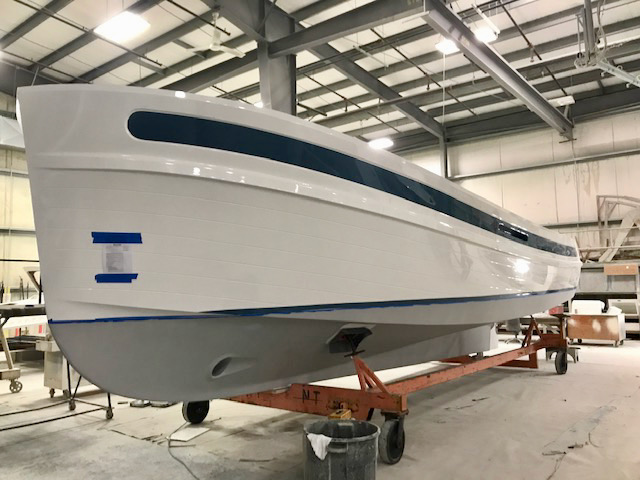
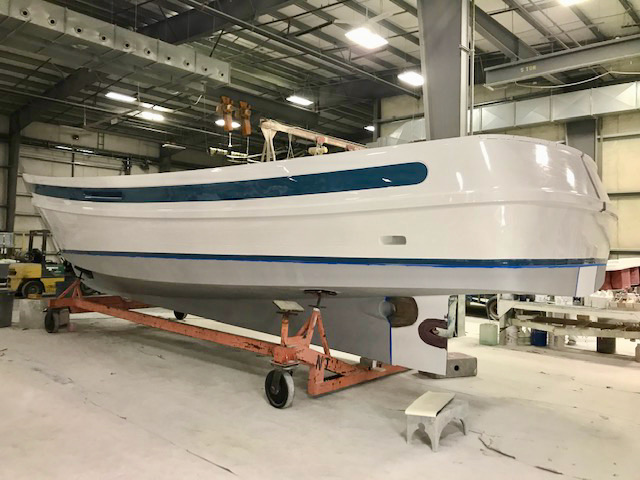
Once the epoxy has cured, two coats of “bottom paint” are applied. This is a special paint that keeps plant and animal life from growing below the waterline. In the past, bottom paint contained nasty chemicals like copper to kill whatever tried to make a home on the hull. Good for the boat, not so good for the ecosystem. These days, paint manufacturers use less harmful substances. Also, the paint itself is designed to fall away in layers as the boat moves through the water, taking whatever is attached with it. This kind of bottom paint is called “ablative”. Because it is designed to wear away, it has to be replaced every one to three years. One of the many periodic maintenance chores involved in boat ownership.
Here’s what the hull looks like after bottom paint has been applied.
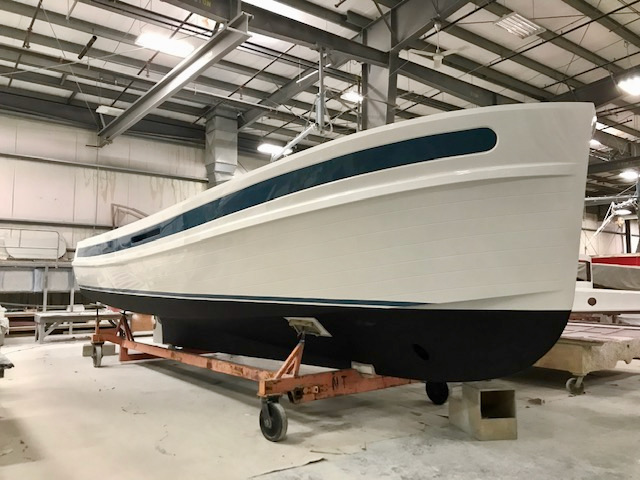
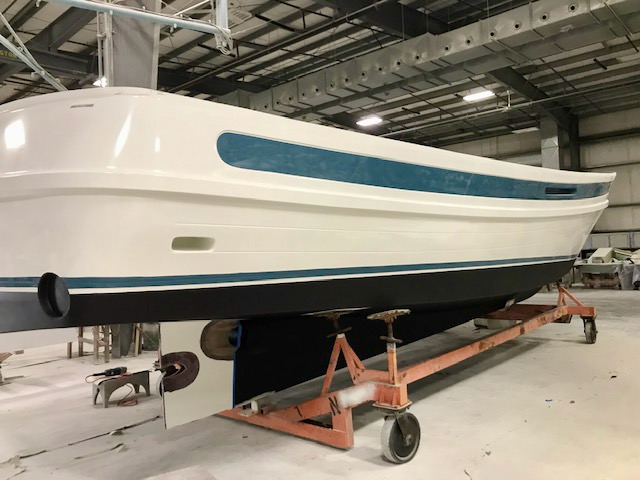
See the hole in the hull? That’s where the “bow thruster” will go. This is a bi-directional propeller powered by an electric motor. Using a control at the helm, the pilot can use the thruster to push the bow one way or the other. It’s useless at speed, but very handy when docking.
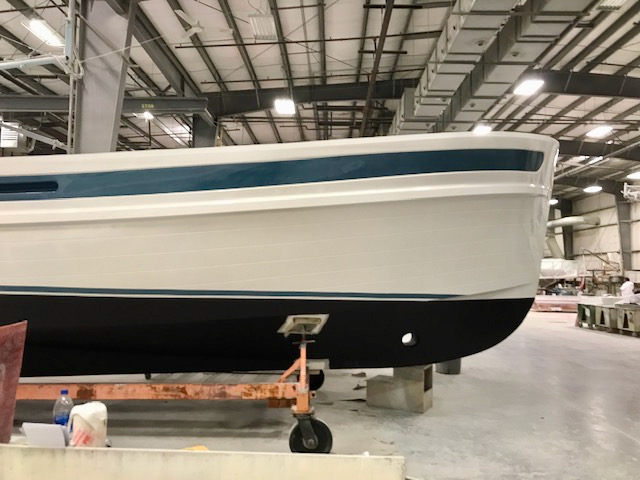
The white area not covered by bottom paint is a bronze plate that will eventually carry the rudder. At its forward end, you may see another hole. This is where the “stern thruster” will be. Nordic Tugs locates the stern thruster where it should be, low in the water in the keel. Many boats mount the stern thruster, if they have one, under the swim step just below the water line. This works and is less expensive, but is also less effective.
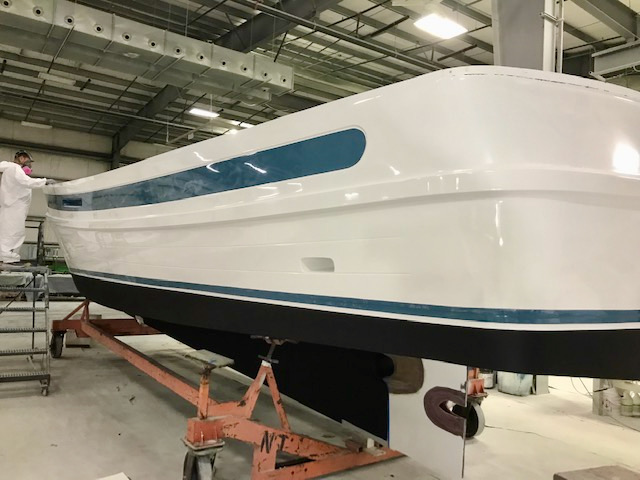
Judging by the cloudy look on the blue stripe, it appears that the worker is giving the hull a coat of polish before moving to the assembly building.
Next: Ètude Settles In